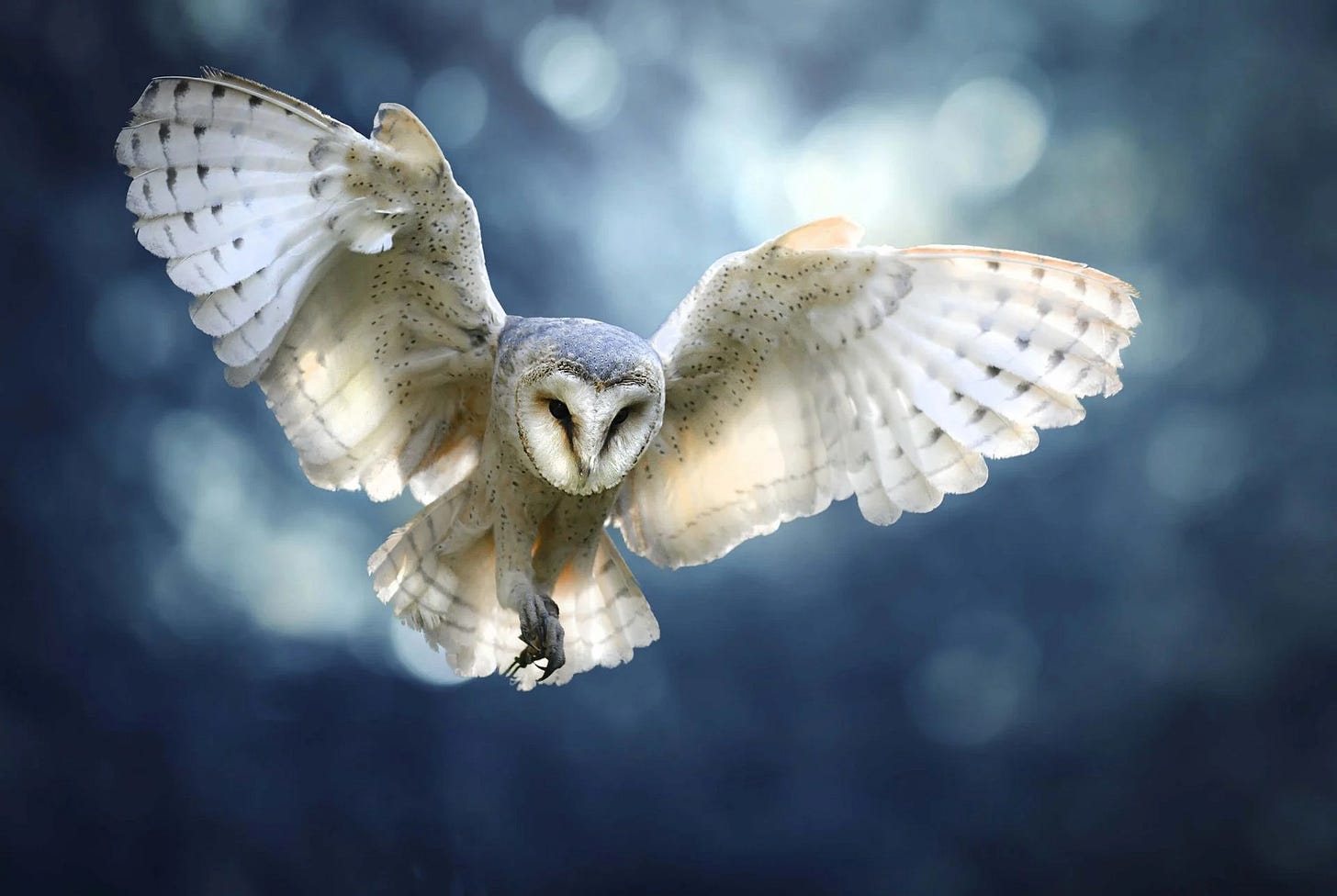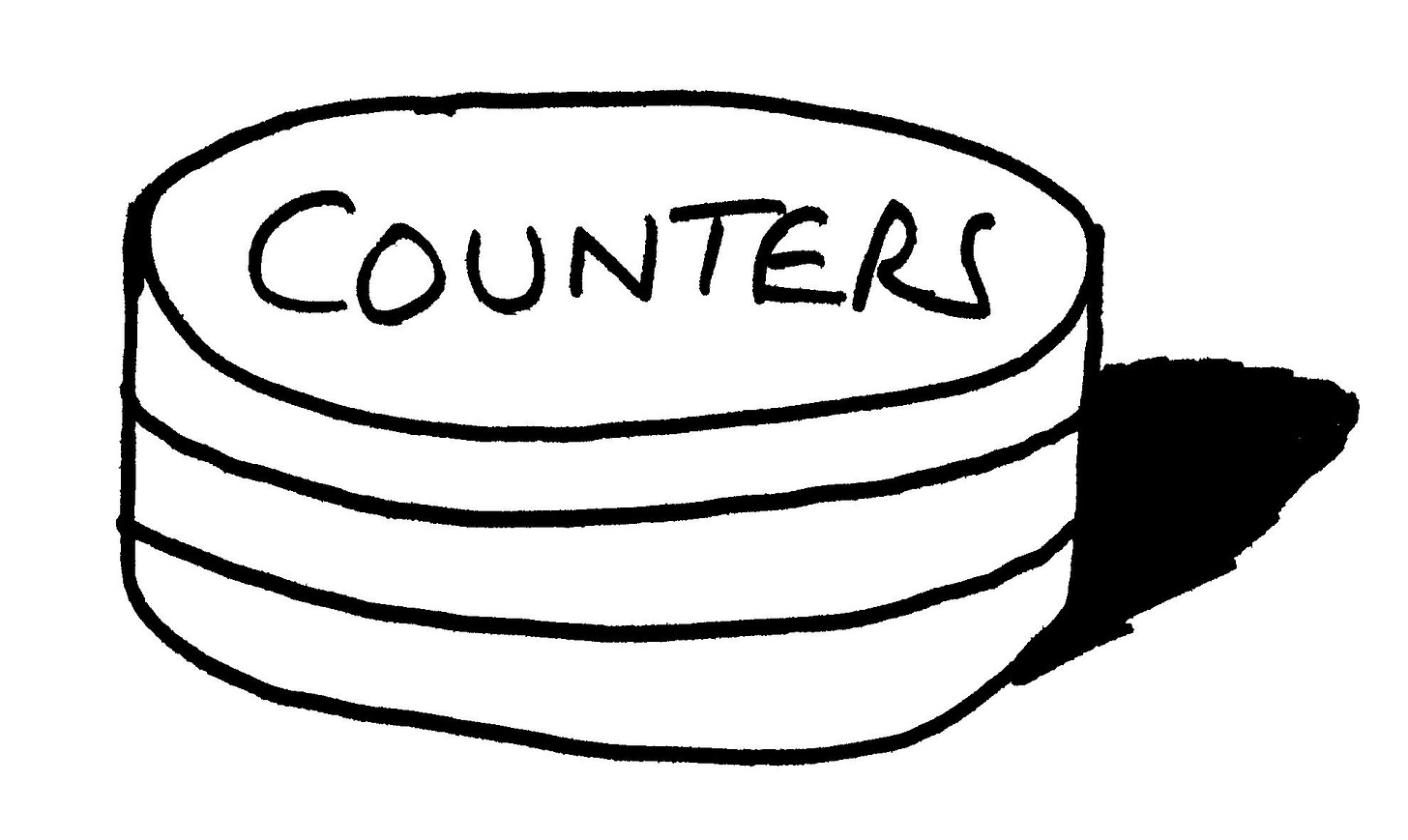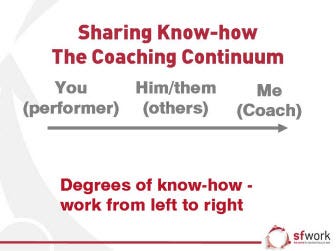77. Nature’s solutions – millions of years of ‘finding what works’
A recent Substack from Brian Klaas reminds us that nature has been evolving effective ways to do things for a very long time. I explore the parallels with Solutions Focus
If you don’t yet follow Brian Klaas here on Substack, you should. Brian is a rare example of an academic who really gets complexity and emergence. His ‘Garden of Forking Paths’ is always fascinating and novel with great perspectives on both current issues and obscure corners of humanity.
The Superb Owl
Last Sunday was Superbowl Sunday in the USA. Brian followed that theme in an unexpected way; he didn’t write about the Superbowl but instead focused on the Superb Owl! The owl, it turns out, is superbly well adapted to its stealthy lifestyle. That’s not only interesting in itself, but it can also point ways ahead with different pressing human challenges from flight to clean energy.
Most of us know that owls fly almost silently. They do this, it transpires, by having uniquely fluffy feathers which help smooth the passage of air over the wing. Why have they evolved to do this? I always assumed that it was to do with approaching prey without warning them. However, in many cases it’s not that at all. The owl flies quietly so that it can hear the prey ahead without being surrounded in its own noise! Read Brian’s free post here.
And that’s not all. Brian goes on to outline how findings from owls and nature more generally – ‘biomimicry’ – have been used to develop solutions over the years. From quiet wind turbines to surgical needles to aeroplane black boxes, people are turning to nature with its effective (and non-patented) ways of working.
The Coaching Continuum
The Solutions Focus has always been interested in ‘finding what works’ and helping people build their own know-how about tackling tough situations. In The Solutions Focus book we called these ‘Counters’ – things that counted, that mattered and were counter to the problem (and therefore helped the solution). The more you could collect the better, which is why our icon/graphic looks like a pile of poker chips (another use of the word ‘counter’ in British English).
It turned out that Paul Z Jackson and I were being much too clever in coining this neologism. For most people around the world the first meaning of the word ‘counter’ is the thing that shop assistants stand behind – which is nothing to do with what we were trying to say at all! However, we have kept this term in the third edition of The Solutions Focus book.
The usual first place to look for counters is in the personal experience of our client or customer. What works for them? Even a bit? In the past or the present? In particular circumstances? The reason for starting there is that what has worked for them before stands a good chance of working again in the present, perhaps with a bit of a twist. However, there are all kinds of other sources of Counters too. In the context of coaching, I call this the Coaching Continuum – different places to look.
Starting with the performer (client or customer) we can then move left to right along the continuum, looking first at people in the performer’s own sphere – maybe colleagues or others at work. Is there someone else who seems particularly good at this? Let’s go and ask them. When Paul and I developed the OSKAR coaching model for Walker’s Snackfoods around the turn of the millennium, this ‘knowledge sharing’ was something they were keen to incorporate into their coaching. And then there is always the possibility of including the coach’s know-how too (though this needs careful consideration).
Looking even more widely – towards the natural world
When we were writing the new edition of The Solutions Focus, I was keen to include the idea of being inspired by the natural world. So, I drafted a new section which now appears in the book. And – lucky old you – I include it here.
Inspiration from the natural world
The field of biomimicry takes solutions evolved in the natural world and applies them to human struggles and problems. Given millions of years to find what works, it’s not surprising that nature provides subtle and effective prompts for tackling tough situations. It’s more surprising that organizations fail to apply this overall strategy more often.
Velcro developer George de Mestral was out hunting with his dog when he noticed how the small burrs of the burdock plant kept tangling with the dog’s hair. He looked more closely and realized that the burrs had tiny hooks which were highly effective in sticking to animals’ coats; indeed, this was key to their propagation. He realized that a similar system of hooks and loops could make a fastening which was robust until pulled apart. Velcro is now a worldwide best-seller.
Sharks are renowned for their teeth, but they are also silent and effective swimmers. Scientists noticed that their skin is covered in tiny V-shaped scales called dermal denticles, more like teeth than fish scales. These decrease drag and turbulence, enabling the shark to swim faster and more quietly. Competitive swimmers found that suits with shark-skin-style surfaces were highly effective—so much so that they were quickly banned! You can find the technology enhancing ship speed and efficiency, and also in the design of bacteria-resistant surfaces in hospitals—the germs cannot attach to the rough surface.
The Japanese Shinkansen bullet train is iconic for futuristic travel. During development, engineers struggled with the loud boom made due to pressure buildup as the train emerged from tunnels in residential areas. Engineer Eiji Nakatsu was a bird-watching enthusiast and noticed that the kingfisher was able to transition from air to water without making a splash. Tests showed that the bird’s long, pointed beak was an ideal shape, and the trains feature this odd-shaped front end which not only reduces noise but increases speed and fuel efficiency too. Nakatsu also took inspiration from the silent wings of an owl and the slippery belly of Adélie penguins in his design process.
There are many examples of biomimicry applications collected at https://www.learnbiomimicry.com/blog/best-biomimicry-examples
Conclusions
This is just one page from the new edition of The Solutions Focus. There are changes – major and minor – on every one of the 300+ pages. For the very latest in SF in coaching, team development and organisational change, it’s still the first and best port of call.
Dates and mates
Some other mates who really get complexity are Chris Corrigan and Caitlin Cross. Their latest Working In Complexity Inside And Out course starts this Friday 20th February 2025. Highly recommended. https://www.harvestmoonconsultants.com/complexity-inside-out.html. Chris writes:
We are looking forward to a good year of complexity working, partnering and learning together with others. There is so much important work for us to do in our communities, organizations, the world and inside ourselves. Thanks for all you contribute to good work in the world!
We are excited to be offering our 5th cohort of our online Complexity Inside and Out program starting February 20th, sharing some deeper learning about what it means to be working in complex contexts, and working together to engage complex challenges at many scales - including the interconnections between wider systems and structure change, the engagement spaces between us that are full of diversity and also inside ourselves as human beings in complexity work. Participants join from all over the world and from a wide range of sectors, work and experience levels. Classes are recorded and materials provided to support participation even if you can't make all the classes live. (See more below and at link HERE)










